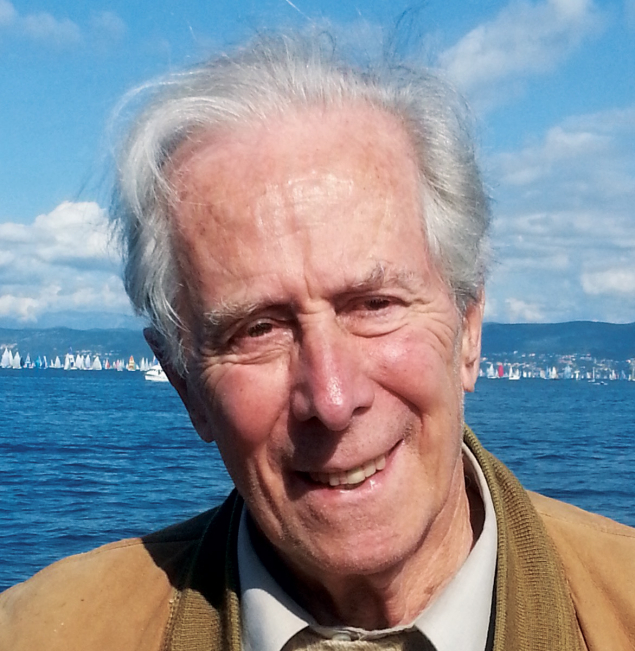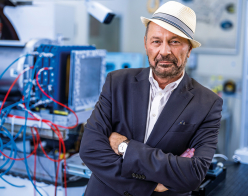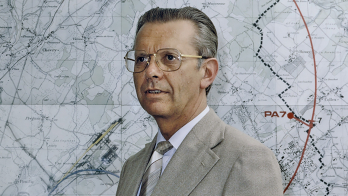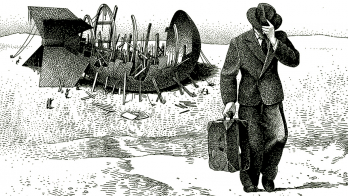
Guido Barbiellini Amidei, who passed away on 15 November 2024, made fundamental contributions to both particle physics and astrophysics.
In 1959 Guido earned a degree in physics from Rome University with a thesis on electron bremsstrahlung in monocrystals under Giordano Diambrini, a skilled experimentalist and excellent teacher. Another key mentor was Marcello Conversi, spokesperson for one of the detectors at the Adone electron–positron collider at INFN Frascati, where Guido became a staff member and developed the first luminometer based on small-angle electron–positron scattering – a technique still used today. Together with Shuji Orito, he also built the first double-tagging system for studying gamma-ray collisions.
Guido later spent several years at CERN, collaborating with Carlo Rubbia, first on the study of K-meson decays at the Proton Synchrotron and then on small-angle proton–proton scattering at the Intersecting Storage Rings. In 1974 he proposed an experiment in a new field for him: neutrino-electron scattering, a fundamental but extremely rare phenomenon known from a handful of events seen in Gargamelle. To distinguish electromagnetic showers from hadronic ones, the CHARM collaboration built a “light” calorimeter made of 150 tonnes of Carrara marble. From 1979 to 1983, 200 electron–neutrino scattering events were recorded.
In 1980 Guido remarked to his friend Ugo Amaldi: “Why don’t we start our own collaboration for LEP instead of joining others?” This suggestion sparked the genesis of the DELPHI collaboration, in which Guido played a pivotal role in defining its scientific objectives and overseeing the construction of the barrel electromagnetic calorimeter. He also contributed significantly to the design of the luminosity monitors. Above all, Guido was a constant driving force within the experiment, offering innovative ideas for fundamental physics during the transition to LEP’s higher-energy phase, and engaging tirelessly with both young students and senior colleagues.
Guido’s insatiable scientific curiosity also extended to CP symmetry violation. In 1989 he co-organised a workshop, with Konrad Kleinknecht and Walter Hoogland, exploring the possibility of an electron–positron ϕ-factory to study CP violation in neutral kaon decays. Two of his papers, with Claudio Santoni, laid the groundwork for constructing the DAΦNE collider in Frascati.
The year 1987 was a turning point for Guido. Firstly, he became a professor at the University of Trieste. Secondly, the detection of neutrinos produced by Supernova 1987A inspired a letter, published in Nature in collaboration with Giuseppe Cocconi, in which it was established that neutrinos have a charge smaller than 10–17 elementary charges. Thirdly, Guido presented a new idea to mount silicon detectors (which he had encountered through work done in DELPHI by Bernard Hyams and Peter Weilhammer) on the International Space Station or a spacecraft to detect cosmic rays and their showers, which led to a seminal paper.
At the beginning of the 1990s, an international collaboration for a large NASA space mission focused on gamma-ray astrophysics (initially named GLAST) began to form, led by SLAC scientists. Guido was among the first proponents and later was the national representative of many INFN groups. The mission, later renamed Fermi, was launched in 2008 and continues to produce significant insights in topics ranging from neutron stars and black holes to dark-matter annihilation.
Beyond GLAST, Guido was captivated by the application of silicon sensors to a new programme of small space missions initiated by the Italian Space Agency. The AGILE gamma-ray astrophysics mission, for which Guido was co-principal investigator, was conceived and approved during this period. Launched in 2007, AGILE made numerous discoveries over nearly 17 years, including identifying the origin of hadronic cosmic rays in supernova remnants and discovering novel, rapid particle acceleration phenomena in the Crab Nebula.
Guido’s passion for physics made him inexhaustible. He always brought fresh insights and thoughtful judgments, fostering a collaborative environment that enriched all the projects he took part in. He was not only a brilliant physicist but also a true gentleman of calm and mild manners, widely appreciated as a teacher and as director of INFN Trieste. Intellectually free and always smiling, he conveyed determination and commitment with grace and a profound dedication to nurturing young talents. He will be deeply missed.







